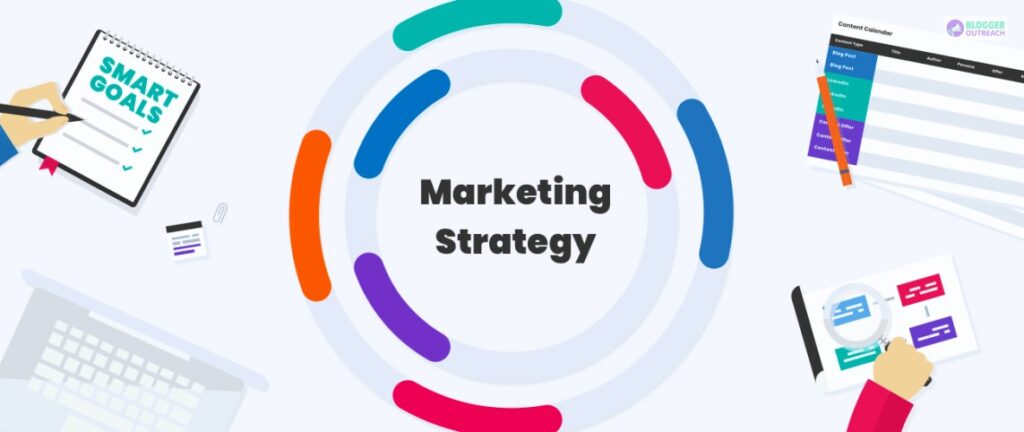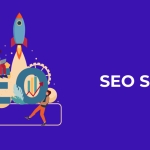Converting leads into sales is the lifeblood of any business. Sales conversion can be tricky to wrap your head around.
But what exactly is sales conversion?
You may have heard the term tossed around in business, but do you know what it means?
Sales conversion is a measure of how successful your sales efforts are.
You can adjust your marketing strategy and improve your sales performance by understanding how to calculate your sales conversion rate.
Sales conversion is the percentage of people who take action on your marketing materials or website.
It can help you identify where you may be losing potential customers and how to improve your conversion rate.
It’s a critical component of any successful business; understanding how to calculate it can help you improve your sales performance.
In this article, we’ll explore the basics of sales conversion, how to calculate sales conversion, and how you can boost your conversion rate and boost your bottom line.
Table Of Content
What Is Sales Conversion?

Sales conversion is a process that helps businesses maximize their profits by converting leads or prospects into paying customers.
It is one of the essential steps for any business to succeed and is highly sought after by entrepreneurs and sales professionals.
This process involves understanding customer needs, reacting to those needs, and converting prospects into paying customers.
Sales conversion also benefits companies by providing valuable insights into the customer’s buying behaviour, which you can use to improve the company’s overall performance.
How To Calculate Sales Conversion?
Sales Conversion Rate measures how effective your website is at turning visitors into customers.
To Calculate It, You Use This Formula:
Sales Conversion Rate = (Number of Purchases / Number of Visitors) x 100
Or,
(Number of leads converted into sales/ Total number of leads) x 100
Let’s Break It Down Step By Step:
(i) Number Of Purchases/Conversions: Count how many people purchased your website during a specific time frame. This could be a day, a week, a month, or any period you want to analyze.
(ii) Number Of Visitors/Leads: Count how many unique visitors came to your website during the same time frame. Unique visitors are individual users, not repeated visits from the same person.
(iii) Divide: Divide the number of purchases by the number of visitors.
(iv) Multiply By 100: To express the result as a percentage, multiply the ratio you obtained in the last step by 100.
For example, if you had 500 purchases and 10,000 visitors in a month, your Sales Conversion Rate would be:
Sales Conversion Rate = (500 / 10,000) x 100 = 5%
This means that 5% of your website visitors turned into customers during that month.
Let’s delve deeper into the components and process of sales conversion.
Here You Go:
(i) Traffic: This is the number of people who visit your website or online store. You can attract traffic through various channels like social media, search engines, or email marketing.
(ii) Engagement: Once people arrive on your website, you need to engage them. Provide quality content, clear navigation, and an appealing layout to keep them interested.
(iii) Interest: Grab their attention by showcasing the benefits and unique features of your products or services. Clearly communicate how you can solve their problems or meet their needs.
(iv) Desire: Build desire by emphasizing the value of what you offer. Use persuasive language, customer reviews, and product demonstrations to show why your offering is a must-have.
(v) Action: Now, it’s time to guide your visitors towards taking a specific action, such as making a purchase. Use compelling calls-to-action (CTAs) that are easy to spot and understand.
(vi) Conversion: When a visitor completes the desired action, like making a purchase, it’s considered a conversion. You can measure your conversion rate by dividing the number of conversions by the total number of visitors.
RepeatSuccessful conversions are great, but the process doesn’t end there. Encourage repeat business by providing excellent customer service, post-purchase support, and incentives for returning customers.

Calculating sales conversion is a key metric that helps determine a sales cycle’s success. It allows businesses to track and measure the number of prospects converted into paying customers, giving them an important metric to measure their overall effectiveness.
One way to calculate sales conversion is by dividing the total sales by the total number of leads. This gives a percentage to compare different sales cycles, making it easier to identify areas that need improvement.
7 Proven Ways To Improve Sales Conversions
There is a plethora of misinformation around this space! But we will help you to stand out. Here are proven strategies that help you with this:
1. Identifying Your Target Audience

Analyzing your target audience requires four steps. These are-
(i) Research The Demographics Of Your Current Customers: Start by gathering data on your customer base, such as age, gender, location, income level, occupation, and interests. This will give you a clear idea of your target audience and their needs and wants.
(ii) Identify Potential Customer Segments: Once you better understand your current customer base, you can identify likely customer segments interested in your product or service. Consider who could benefit from using your product, and consider different demographic and psychographic characteristics to narrow down your target audience.
(iii) Analyze Customer Behavior: Analyzing customer behaviour can help you understand how they interact with your product or service and what drives them to purchase. Use customer surveys, website analytics, and other data sources to identify trends and preferences. This data can help you refine your target audience and create more effective marketing campaigns.
(iv) Test And Refine Your Strategies: After identifying and analyzing your target audience, you can develop and test marketing strategies to reach them. Try different channels, messaging techniques, and creative approaches to see which resonates most with your target audience. Monitor your results and adjust your strategy as needed.
2. Developing A Comprehensive Marketing Strategy

As a leading digital marketing agency, we follow a step-by-step process to devise our sales conversion marketing strategy. Let’s hear out from us-
(i) Identifying Goals: The first step in developing a comprehensive marketing strategy is identifying your goals. What do you want to increase sales? Website traffic? Or brand awareness? Next, define your objectives and put them in writing so you can measure success.
(ii) Understand Your Audience: Knowing your target audience is pivotal to developing a successful marketing strategy. First, identify your potential customers and understand their needs and interests. Then, create customer personas to realize whom you are targeting.
(iii) Establish Your Budget: Setting a budget for your marketing strategy will help you better allocate resources and track expenses. Consider both your total budget and your marketing budget when creating your plan.
(iv) Develop Your Messaging: Once you understand your target audience and have established your budget, you can start creating your messaging. Develop messaging that resonates with your target audience and is tailored to each channel.
(v) Select Your Channels: Now that you have your messaging and budget, you can select the channels you will use to reach your target audience. Consider traditional marketing channels (television, radio, and print) and digital marketing channels such as search engine marketing, social media, and email marketing.
(vi) Track And Measure Results: Once your marketing strategy is in place, track and measure the results. Monitor the success of each channel and make adjustments as needed. Use tracking tools and analytics.
3. Understanding Your Customer’s Buying Journey

By understanding your customer’s buying journey, you can create content and strategies that help improve sales conversions.
This includes creating content that educates and guides customers, providing frictionless checkout processes, and offering loyalty programs and discounts. This will help you build trust and loyalty and ultimately increase conversions.
(i) Awareness: The first step in the customer’s buying journey is awareness. This is when they become aware of your company, products, and services. You need to create content that educates your customers on the value of your offering.
(ii) Consideration: After the customer knows your company, they’ll start considering your products and services. To help them decide, you must create content that helps them compare and understand different options.
(iii) Decision: Once the customer has taken the time to learn about your offerings, they’ll decide whether or not to purchase. To increase conversions, you need to provide helpful resources that make it easier for them to decide to buy.
(iv) Purchase: When the customer is ready to purchase, you must provide a frictionless checkout process. This includes having clear pricing, payment options, and shipping information.
(v) Retention: You must focus on retaining the customer after the purchase. This can include creating loyalty programs, offering discounts, and providing content that adds value to the customer’s experience.
4. Utilizing Retargeting Ads

By leveraging Retargeting ads, you can target the users who are already aware of your product or have visited your website. Successful retargeting ads strategy involves the following-
(i) Identify Your Target Audience: Before you create any retargeting ads, you need to identify your target audience. Determine who has already interacted with your product or brand and create specific ad campaigns that target those people.
(ii) Create Engaging Ads: Once you’ve identified your target audience, create engaging ads tailored to their interests. Use compelling visuals, headlines, and copy to draw them in and encourage them to take action.
(iii) Utilize Multiple Ad Formats: Retargeting campaigns can deliver multiple types of ads, including display ads, search ads, and social media ads. Choose the best ad format for your specific campaign goals.
(iv) Track Your Results: It’s important to track your results to understand how effective your retargeting campaigns are. Use analytics tools to monitor metrics such as click-through rates and conversions.
(v) Test & Iterate: Test and iterate your campaigns regularly to determine which ones perform best. Try different ad formats and messages to see what resonates with your target audience and drives the most conversions.
5. Optimizing Your Website For Conversion

Optimum user experience is directly proportional to your sales. The better understanding you provide through your website, the more time they spend on your website.
Here’s How You Can Optimize Your Website-
(i) Use A Responsive Design: Make sure that your website’s design works with all screen sizes, including mobile phones, tablets, and desktop computers.
(ii) Improve Your Website Speed: Make sure your website loads quickly and efficiently. Slow websites can be a major turn-off for potential customers.
(iii) Use Clear Call-To-Action Buttons: Make sure your call-to-action buttons are clear and easy to find. Refrain from using contradictory calls to action. Your call-to-action must lead the customers to take the desired action.
(iv) Make Checkout Process Quick And Easy: Make sure your checkout process is as simple as possible. Remove any unnecessary steps, such as creating an account, to make it as quick and easy as possible.
(v) Simplify Your Navigation: Make it hassle-free for customers to find what they are looking for by simplifying your navigation. Remove any unnecessary pages and links, and make sure all important pages are visible.
6. Streamline Your Email Marketing Effort

Email marketing is a great way to skyrocket your sales conversion. The best practices of email marketing for improving your sales conversion rate are as follows-
(i) Personalize Your Email Content: Personalizing your emails can be one of the important ways to improve your email marketing campaigns and increase engagement. Segregate your customers depending on their purchase history, interests, or other criteria, and deliver tailored content to their needs.
(ii) Make Your Subject Lines Stand Out: Subject lines are the stepping stones of any good email marketing strategy. Without having a clear subject line, no one will open your email. Craft subject lines that are clear, concise, and attention-grabbing to increase your email open rates.
(iii) Utilize A/B Testing: A/B testing is the smartest way to optimize your email marketing campaigns and determine which versions of your emails perform the best. For example, test different subject lines, calls-to-actions, images, and more to see which elements produce the highest engagement and conversions.
(iv) Optimize For Mobile: Optimizing your emails for mobile is essential, with more people using their mobile devices to open emails. Curate responsive emails that look great on any device.
(v) Leverage Automation: Automation can be a great way to improve the magnitude of your email campaigns. You can use automation to send triggered emails based on customer interactions, such as abandoned cart emails, welcome emails, and more.
(vi) Include Social Sharing Buttons: Adding social sharing buttons to your emails can help you grow your reach and increase engagement.
7. Harness The Power Of Social Media

The importance of social media in uplifting your sales conversion is immense. Here is the blueprint that you can include to improve the conversion rate in sales-
(i) Create A Social Media Strategy: Before leveraging social media’s power to improve sales conversions, you need to create a comprehensive social media strategy. This strategy should include detailed objectives, goals, and tactics for each social media channel.
(ii) Leverage User-Generated Content: User-generated content (UGC) is one of the practical ways to engage with your followers and build trust with potential customers. Encourage your customers to post photos, videos, and reviews of your products or services on social media.
(iii) Utilize Influencer Marketing: Influencer marketing is a great way to expose to a large audience and drive conversions. Identify influencers in your space with a large and engaged following, and collaborate with them to share your product or service with their followers.
(iv) Run Social Media Promotions And Contests: Social media promotions and contests are a great way to attract attention and generate leads. Offer discounts or incentives to encourage people to follow you and share your content.
(v) Monitor And Respond To Customer Feedback: Make sure you monitor and respond to customer feedback on social media. This will help you build trust with potential customers and provide valuable insights into what your customers want.
(vi) Optimize Your Content For Conversions: Optimizing your content for conversions is essential for success on social media. Use compelling visuals and catchy headlines to attract attention and encourage people to take action.
Time To Skyrocket Your Sales Conversion
At this point, you got detailed insights into a sales conversion. But as you know, the sales arena is constantly evolving, and you must act smartly to cope with the ever-changing marketing world. As a team of experts, we have seen a lot of people needing to make up to the mark.
Constant learning and adaptability to new changes matter a lot! We’ve shared the detailed plans with you. Now it’s your time to implement it. Be patient with your efforts, and results will come your way.
If you want more information, please get in touch with us!
Read Also:









